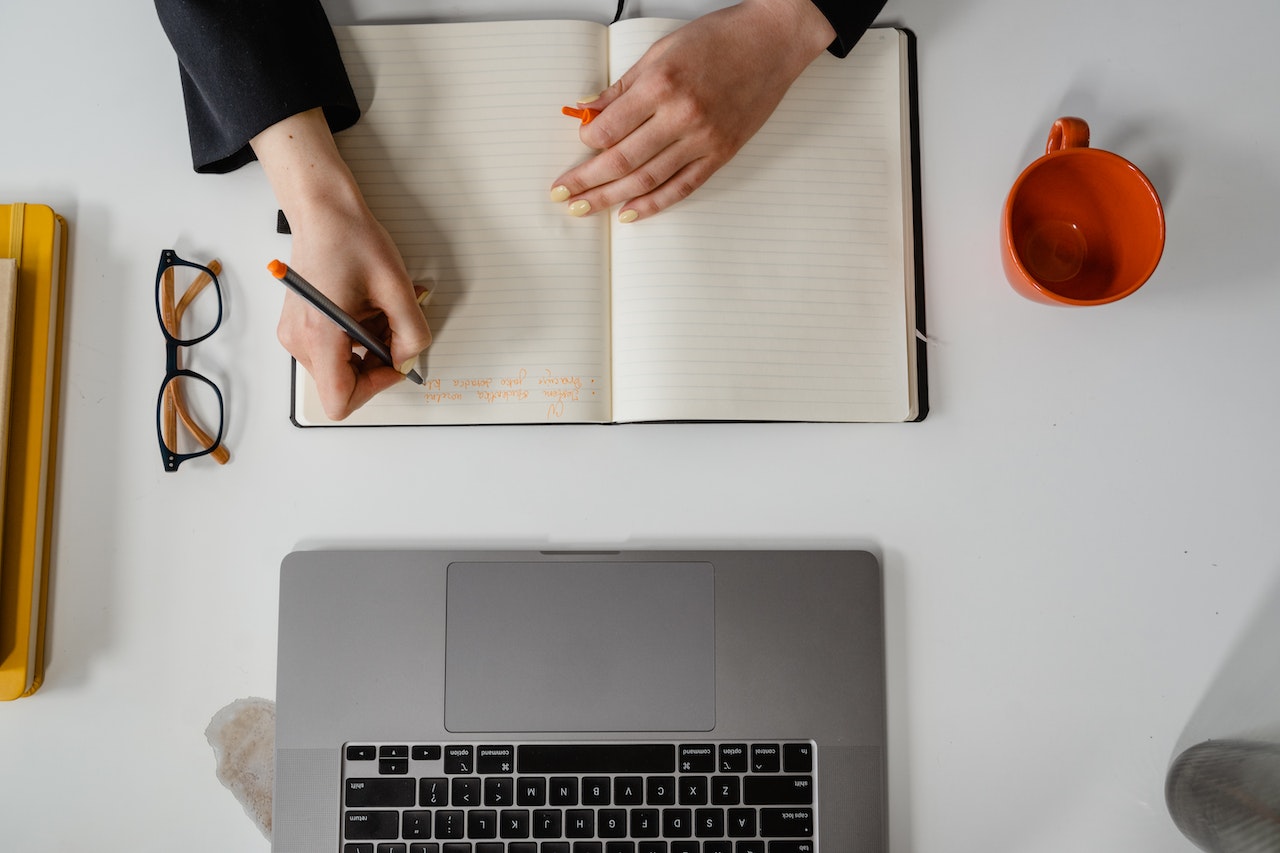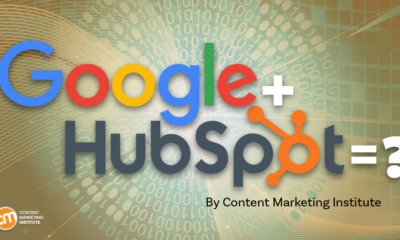TECHNOLOGY
Balancing a Human Touch and Automation in Content Creation

Artificial intelligence (AI) has come a long way in the past ten years.
The AI of today has been trained using machine-learning programs that mimic human cognition and can produce creative content in the blink of an eye.
AI programs like ChatGPT use an ever-expanding neural network to sift through a language model with over 175 million parameters.
However, no matter how sophisticated AI becomes, marketers and business leaders still need to incorporate the human touch in their content creation.
What Can AI Offer?
AI-generated content is one of the most controversial trends in visual content production today. Creatives are already using tools like DALL-E for idea generation and many business leaders see AI as a cheaper alternative to hiring real-life artists. Most AI programs require a subscription fee, but these fees still significantly undercut real-life content creators.
As well as being cheaper, AI is quicker than its human counterparts. AI is capable of producing accurate, human-like content in a fraction of the time that a content writer or artist requires. The Guardian even ran an AI-generated op-ed to show off the power of machine learning and language models. Amana Fontanella-Khan, Opinion Editor at the Guardian noted that the AI-generated piece “took less time to edit than many human op-eds.”
However, AI has some clear limits. AI algorithms are only as good as their training parameters and programs regularly misfire. AI-generated content is essentially plagiarism, too. AI draws from the original content that it finds on the web to steal fragments of sentences and ideas without attribution. This is why Google continues to list low-quality AI-generated creative content as “spam”
The Need for Human Content
At first glance, AI-generated content seems set to replace human creatives. However, AI can only work with the training programs and content it’s been fed. This means that AI will always be a step behind human-generated content.
Instead of replacing human creators, business leaders should strive to incorporate AI in ways that support creatives. Blending humans and robotics is the best way to achieve greater efficiency while retaining creative control over the final product. Creators who use AI benefit from reduced errors and quicker idea generation without sacrificing authenticity or their creative integrity.
Retaining human creatives is particularly important for organizations that work with local communities. AI isn’t capable of producing nuanced content about specific communities and has a history of producing content that is prejudiced or discriminatory. Community-focused content hinges on building authentic connections with an organization’s stakeholders. Organizations must work with human creators if they want to incorporate personal stories and inclusivity in their marketing content.
Quality Control
AI can’t replace human content creators. However, AI can be used to improve quality control and reduce human error.
Content writers around the globe already utilize AI during the writing and editing process. Programs like Grammarly and Writer.com use machine-learning algorithms to spot errors and suggest revisions. This can help writers minimize grammatical errors and improve their writing speed.
Photographers and graphic designers can also leverage AI in their favor. Post-processing can be extremely time-consuming and costly. Programs like VanceAI and Photoshop use AI to speed up the editing process and spot errors before content gets published. These programs can add color to black-and-white images and adjust portrait photos to modify the subject’s age, expression, and pose.
AI can also enhance videography and increase the efficiency of post-production edits. AI can help videographers by automatically color-grade scenes — even if the original content was shot on different cameras. AI can further aid video editors by automating effort-intensive tasks like rotoscoping and inpainting.
Content Testing
Human-generated content is designed to inform consumers and create a personal connection between businesses and their stakeholders. However, personalizing every website and app to each visitor is impossible without AI-powered content.
AI-powered content leverages big data and machine learning algorithms to present a personalized experience to each website visitor. Programs like the Adobe Experience Cloud can significantly improve a business’s UX by breaking down data silos and automating the content that users see based on multivariate testing.
This can enhance engagement rates among consumers and improve businesses’ marketing ROI. However, the content that is shown to consumers should still be human-generated and chosen from a pre-selected list of marketing materials.
Choosing the Right Approach
AI-generated content is a quicker and cheaper alternative to human-generated content. However, most customers do not want to consume content created by AI and are aware that AI-generated content is the result of plagiarism and appropriation.
Business leaders who want to protect their brand image have to assume that consumers will spot AI when they see it. Customers will quickly turn away from businesses that spam their inboxes with automated content and will opt for competitors who still value the human touch instead.
That doesn’t mean that businesses have to turn their back on automation and AI altogether. Businesses can use AI to personalize landing pages, schedule and send email content, and improve the quality of human-generated content that their marketing departments create.
TECHNOLOGY
Next-gen chips, Amazon Q, and speedy S3

AWS re:Invent, which has been taking place from November 27 and runs to December 1, has had its usual plethora of announcements: a total of 21 at time of print.
Perhaps not surprisingly, given the huge potential impact of generative AI – ChatGPT officially turns one year old today – a lot of focus has been on the AI side for AWS’ announcements, including a major partnership inked with NVIDIA across infrastructure, software, and services.
Yet there has been plenty more announced at the Las Vegas jamboree besides. Here, CloudTech rounds up the best of the rest:
Next-generation chips
This was the other major AI-focused announcement at re:Invent: the launch of two new chips, AWS Graviton4 and AWS Trainium2, for training and running AI and machine learning (ML) models, among other customer workloads. Graviton4 shapes up against its predecessor with 30% better compute performance, 50% more cores and 75% more memory bandwidth, while Trainium2 delivers up to four times faster training than before and will be able to be deployed in EC2 UltraClusters of up to 100,000 chips.
The EC2 UltraClusters are designed to ‘deliver the highest performance, most energy efficient AI model training infrastructure in the cloud’, as AWS puts it. With it, customers will be able to train large language models in ‘a fraction of the time’, as well as double energy efficiency.
As ever, AWS offers customers who are already utilising these tools. Databricks, Epic and SAP are among the companies cited as using the new AWS-designed chips.
Zero-ETL integrations
AWS announced new Amazon Aurora PostgreSQL, Amazon DynamoDB, and Amazon Relational Database Services (Amazon RDS) for MySQL integrations with Amazon Redshift, AWS’ cloud data warehouse. The zero-ETL integrations – eliminating the need to build ETL (extract, transform, load) data pipelines – make it easier to connect and analyse transactional data across various relational and non-relational databases in Amazon Redshift.
A simple example of how zero-ETL functions can be seen is in a hypothetical company which stores transactional data – time of transaction, items bought, where the transaction occurred – in a relational database, but use another analytics tool to analyse data in a non-relational database. To connect it all up, companies would previously have to construct ETL data pipelines which are a time and money sink.
The latest integrations “build on AWS’s zero-ETL foundation… so customers can quickly and easily connect all of their data, no matter where it lives,” the company said.
Amazon S3 Express One Zone
AWS announced the general availability of Amazon S3 Express One Zone, a new storage class purpose-built for customers’ most frequently-accessed data. Data access speed is up to 10 times faster and request costs up to 50% lower than standard S3. Companies can also opt to collocate their Amazon S3 Express One Zone data in the same availability zone as their compute resources.
Companies and partners who are using Amazon S3 Express One Zone include ChaosSearch, Cloudera, and Pinterest.
Amazon Q
A new product, and an interesting pivot, again with generative AI at its core. Amazon Q was announced as a ‘new type of generative AI-powered assistant’ which can be tailored to a customer’s business. “Customers can get fast, relevant answers to pressing questions, generate content, and take actions – all informed by a customer’s information repositories, code, and enterprise systems,” AWS added. The service also can assist companies building on AWS, as well as companies using AWS applications for business intelligence, contact centres, and supply chain management.
Customers cited as early adopters include Accenture, BMW and Wunderkind.
Want to learn more about cybersecurity and the cloud from industry leaders? Check out Cyber Security & Cloud Expo taking place in Amsterdam, California, and London. Explore other upcoming enterprise technology events and webinars powered by TechForge here.
TECHNOLOGY
HCLTech and Cisco create collaborative hybrid workplaces

Digital comms specialist Cisco and global tech firm HCLTech have teamed up to launch Meeting-Rooms-as-a-Service (MRaaS).
Available on a subscription model, this solution modernises legacy meeting rooms and enables users to join meetings from any meeting solution provider using Webex devices.
The MRaaS solution helps enterprises simplify the design, implementation and maintenance of integrated meeting rooms, enabling seamless collaboration for their globally distributed hybrid workforces.
Rakshit Ghura, senior VP and Global head of digital workplace services, HCLTech, said: “MRaaS combines our consulting and managed services expertise with Cisco’s proficiency in Webex devices to change the way employees conceptualise, organise and interact in a collaborative environment for a modern hybrid work model.
“The common vision of our partnership is to elevate the collaboration experience at work and drive productivity through modern meeting rooms.”
Alexandra Zagury, VP of partner managed and as-a-Service Sales at Cisco, said: “Our partnership with HCLTech helps our clients transform their offices through cost-effective managed services that support the ongoing evolution of workspaces.
“As we reimagine the modern office, we are making it easier to support collaboration and productivity among workers, whether they are in the office or elsewhere.”
Cisco’s Webex collaboration devices harness the power of artificial intelligence to offer intuitive, seamless collaboration experiences, enabling meeting rooms with smart features such as meeting zones, intelligent people framing, optimised attendee audio and background noise removal, among others.
Want to learn more about cybersecurity and the cloud from industry leaders? Check out Cyber Security & Cloud Expo taking place in Amsterdam, California, and London. Explore other upcoming enterprise technology events and webinars powered by TechForge here.
TECHNOLOGY
Canonical releases low-touch private cloud MicroCloud

Canonical has announced the general availability of MicroCloud, a low-touch, open source cloud solution. MicroCloud is part of Canonical’s growing cloud infrastructure portfolio.
It is purpose-built for scalable clusters and edge deployments for all types of enterprises. It is designed with simplicity, security and automation in mind, minimising the time and effort to both deploy and maintain it. Conveniently, enterprise support for MicroCloud is offered as part of Canonical’s Ubuntu Pro subscription, with several support tiers available, and priced per node.
MicroClouds are optimised for repeatable and reliable remote deployments. A single command initiates the orchestration and clustering of various components with minimal involvement by the user, resulting in a fully functional cloud within minutes. This simplified deployment process significantly reduces the barrier to entry, putting a production-grade cloud at everyone’s fingertips.
Juan Manuel Ventura, head of architectures & technologies at Spindox, said: “Cloud computing is not only about technology, it’s the beating heart of any modern industrial transformation, driving agility and innovation. Our mission is to provide our customers with the most effective ways to innovate and bring value; having a complexity-free cloud infrastructure is one important piece of that puzzle. With MicroCloud, the focus shifts away from struggling with cloud operations to solving real business challenges” says
In addition to seamless deployment, MicroCloud prioritises security and ease of maintenance. All MicroCloud components are built with strict confinement for increased security, with over-the-air transactional updates that preserve data and roll back on errors automatically. Upgrades to newer versions are handled automatically and without downtime, with the mechanisms to hold or schedule them as needed.
With this approach, MicroCloud caters to both on-premise clouds but also edge deployments at remote locations, allowing organisations to use the same infrastructure primitives and services wherever they are needed. It is suitable for business-in-branch office locations or industrial use inside a factory, as well as distributed locations where the focus is on replicability and unattended operations.
Cedric Gegout, VP of product at Canonical, said: “As data becomes more distributed, the infrastructure has to follow. Cloud computing is now distributed, spanning across data centres, far and near edge computing appliances. MicroCloud is our answer to that.
“By packaging known infrastructure primitives in a portable and unattended way, we are delivering a simpler, more prescriptive cloud experience that makes zero-ops a reality for many Industries.“
MicroCloud’s lightweight architecture makes it usable on both commodity and high-end hardware, with several ways to further reduce its footprint depending on your workload needs. In addition to the standard Ubuntu Server or Desktop, MicroClouds can be run on Ubuntu Core – a lightweight OS optimised for the edge. With Ubuntu Core, MicroClouds are a perfect solution for far-edge locations with limited computing capabilities. Users can choose to run their workloads using Kubernetes or via system containers. System containers based on LXD behave similarly to traditional VMs but consume fewer resources while providing bare-metal performance.
Coupled with Canonical’s Ubuntu Pro + Support subscription, MicroCloud users can benefit from an enterprise-grade open source cloud solution that is fully supported and with better economics. An Ubuntu Pro subscription offers security maintenance for the broadest collection of open-source software available from a single vendor today. It covers over 30k packages with a consistent security maintenance commitment, and additional features such as kernel livepatch, systems management at scale, certified compliance and hardening profiles enabling easy adoption for enterprises. With per-node pricing and no hidden fees, customers can rest assured that their environment is secure and supported without the expensive price tag typically associated with cloud solutions.
Want to learn more about cybersecurity and the cloud from industry leaders? Check out Cyber Security & Cloud Expo taking place in Amsterdam, California, and London. Explore other upcoming enterprise technology events and webinars powered by TechForge here.
-

 SEARCHENGINES7 days ago
SEARCHENGINES7 days agoGoogle Core Update Volatility, Helpful Content Update Gone, Dangerous Google Search Results & Google Ads Confusion
-

 SEO7 days ago
SEO7 days ago10 Paid Search & PPC Planning Best Practices
-

 MARKETING5 days ago
MARKETING5 days ago5 Psychological Tactics to Write Better Emails
-

 SEARCHENGINES6 days ago
SEARCHENGINES6 days agoWeekend Google Core Ranking Volatility
-

 MARKETING6 days ago
MARKETING6 days agoThe power of program management in martech
-

 SEO6 days ago
SEO6 days agoWordPress Releases A Performance Plugin For “Near-Instant Load Times”
-
SEARCHENGINES4 days ago
Daily Search Forum Recap: April 15, 2024
-

 PPC5 days ago
PPC5 days ago20 Neuromarketing Techniques & Triggers for Better-Converting Copy














You must be logged in to post a comment Login